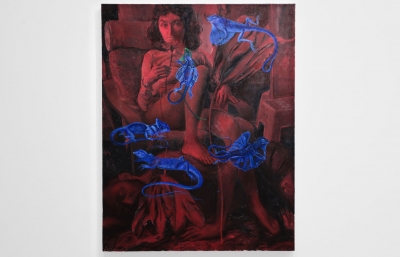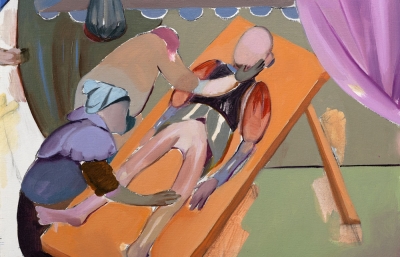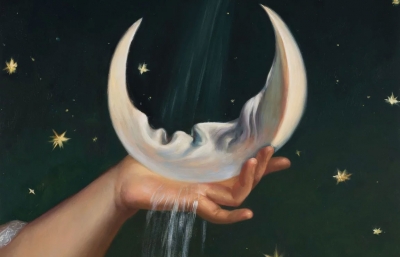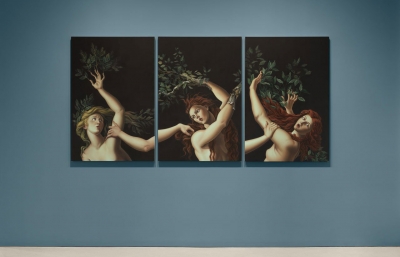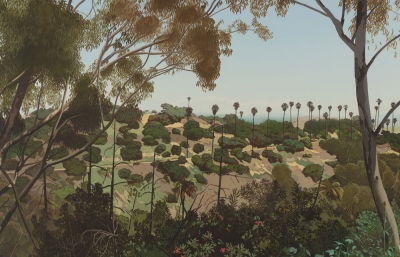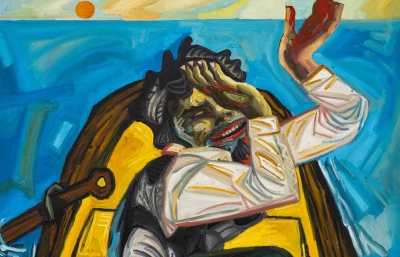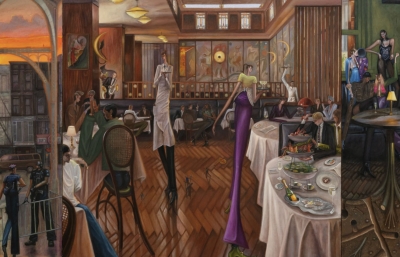Anat Ebgi presents Quiet Days, a solo exhibition by Korean-American artist and past Juxtapoz featured artist (Winter 2024) Sarah Lee on view at 6150 Wilshire Blvd from November 16 through January 11. This is Lee’s first solo exhibition with the gallery and presents new landscape paintings.
Enveloping viewers with expansive solitude, the nine haunting landscapes in Quiet Days travel through a range of seasons, climates, and topographies. Lee’s moody scenes occur on one plane, presenting a whole story in a single image and evoking a sense of total completeness. She works intuitively, building the compositions piece by piece, often painting at night, or through the night. Her paintings reflect a shared sense of human vulnerability and smallness felt looking up at a starry night sky. They are containers for the kind of inner distance found in dreams.
Absent brushstrokes, the artist’s hand is made nearly invisible through softly and slowly applied paint. She creates slick layered surfaces with unexpected elements like in Glacier, a full moon reflects its crescent counterpart in the polar waters below contributing to an uncanny consciousness. Regardless of geography, each painting begins the same—two colors, a top and a bottom; they meet to form a horizon. An elemental eeriness emerges between earth and sky. In End of the Cliff, comets shoot across the heavens over a still glass sea below. In others this tension is expressed with a windy ground and a muffled airless sky above. Chartreuse, goldenrod, earthy greens, and icy blues, Lee’s palette is also built around the use of turquoise, a color that is defined by its in-betweenness, not completely blue or green, it occurs in many forms in nature as water, plant, stone, and sky.
The exhibition is titled after a poem by Hang Kang that Lee translated called “Quiet Days” about a moment when the poet was feeling unwell, and noticing a small, shiny, white rock in her path she said, “how lucky you are, to have no life.” The poem speaks about existing peacefully, unbound by life’s complexity; it suggests nature’s indifference to our pains and anxieties. Like the seas, snowdrifts, moon, and clouds in Lee’s paintings, the rock exists and it exists beautifully.



